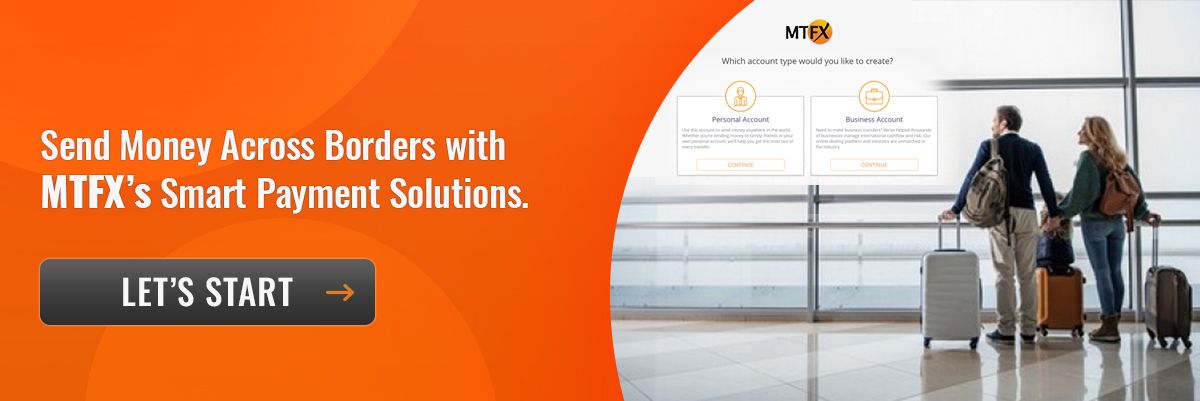Explained: What is an IBAN code?
An International Bank Account Number (IBAN) is an internationally recognized code you may need for sending or receiving overseas money transfers.
An IBAN is one of the requirements for cross-border payments, depending on which country you're sending to. This sparks the question, what's an IBAN? Simply put, an International Bank Account Number is a unique code that identifies a specific bank account. When making cross-border payments, an IBAN works to verify account data to ensure your money arrives quickly and securely at its destination.
How does an IBAN work?
IBANs are a standardized international numbering system. This numbering system simplifies bank account identification to minimize cross-border transaction errors. Research shows that using IBANs reduces transaction errors to under 0.1% of total payments. Hence, using a unique identifier for overseas bank accounts has become an internationally agreed method for streamlining communication and processing cross-border transactions.
That means you'll need to know your beneficiary's IBAN code before sending money to an IBAN region. You'll also need to provide information, such as:
- Beneficiary name
- Beneficiary address
- Bank name
- Bank Swift code
- Bank address
- Reason for transfer
Your international money transfer provider will use the IBAN to check the country of origin and identify your beneficiary's account number. They will also use the IBAN to confirm that your bank details are accurate. All this safeguards your funds and speeds up your international payments.
What countries use an IBAN system?
IBANs aren't used across the entire world. For example, the IBAN registry published by SWIFT shows the IBAN format of each country, and only 82 out of 195 countries in the world have implemented the IBAN.
Since Eurozone banks originally adopted the IBAN, most European countries use this numbering system, which later became an international standard under ISO 13616:1997. Countries that use the IBAN include the United Kingdom, France, Italy and Germany.
Countries like Canada, the U.S. and Australia don't support the IBAN system. However, these countries can process payments to IBAN regions.
Breaking down an IBAN code
IBAN codes have a standardized format and can contain at most 34 characters/digits. Here are three examples from different countries:
- France – FR14 2004 1010 0505 0001 3M02 606 (27 characters)
- The UK – GB29 NWBK 6016 1331 9268 19 (22 characters)
- Brazil – BR18 0036 0305 0000 1000 9795 493C 1 (29 characters)
You can simplify these IBAN codes to come up with a generic form, AA-BB-CCCC-DDDDDD-EEEEEEEE. In that case, AA is the country code, BB is the check number, CCCC is the bank identifier, and EEEEEEEE is the basic bank account number, BBAN.
Keep in mind an IBAN is not a bank account number or sort code. Instead, an IBAN contains the bank account number plus extra information to quickly identify individual bank accounts for cross-border payments.
IBAN vs. SWIFT codes
IBAN codes identify individual bank accounts and the given country. They contain up to 34 characters. On the other hand, SWIFT/BIC codes identify a specific bank or financial institution in an international transaction and have 8-11 characters.
SWIFT, the global network that processes international payments, is also responsible for standardizing the formats for the IBAN system. IBAN and SWIFT codes are internationally recognized and designed to ensure smooth international money transfers.
Finding your IBAN
If you're receiving money in an IBAN country, your sender will ask for your IBAN. Check your banking statement or log onto your online banking platform to find it. You can also use an IBAN calculator. If you're the sender, ask your beneficiary to confirm the IBAN.
Getting this number right is crucial to avoid international payment difficulties, such as invalid transactions, extra costs and delayed transfers.

Got your IBAN? Send money abroad today
An IBAN is a topic of interest when sending payments to IBAN regions. This numbering system makes life easier for you by preventing errors in international transactions, helping you avoid hassle.
That said, if you need an IBAN for international bank transfers, you'll also need to consider the associated costs, such as exchange rate margins and transfer fees. The costs are bound to be high when using a bank because banks charge hefty exchange rate margins and expensive transfer fees.
Thankfully, there are alternatives – currency specialists like MTFX – with exchange rates 3-5% lower and affordable transfer fees, so your beneficiary gets more than your bank offers.
Send money overseas the simple and cost-effective way with MTFX – Register an account today.
Popular related articles;
- Explained: What is a SWIFT code?
- International money transfers to foreign countries
- Invoice international clients cheaper, faster and easier
- Money transfer checklist a few things to consider
- Pay overseas suppliers in foreign currency
Sources
Copyright © 2024 MTFX Group


